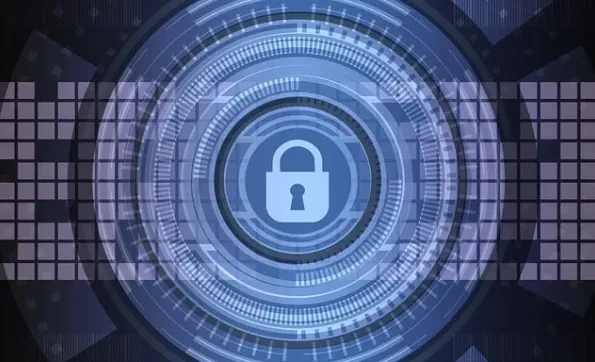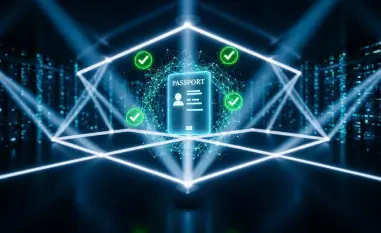Over the last decade, the landscape of cyber warfare has undergone significant changes, prompting a re-evaluation of cybersecurity strategies by governments and industries worldwide. The traditional focus on deterrence and reactive defenses is being superseded by a new proactive approach known as cyber persistence. This strategy entails actively hunting down cyber threats before they can materialize. Pioneered by the United States and quickly adopted by its allies, this shift underscores the inadequacy of defense alone in securing cyberspace.
The Shift Toward Cyber Persistence
Cyber Persistence Defined
Cyber persistence represents a strategic pivot from traditional deterrence to a more aggressive stance in cybersecurity. Unlike deterrence, which aims to dissuade adversaries with the threat of retaliation, cyber persistence involves pre-emptively identifying and neutralizing threats. Cyber deterrence has struggled to address the complex behaviors of cybercriminals, who exploit vulnerabilities to compromise critical infrastructure, steal sensitive data, and disrupt networks. In contrast, cyber persistence is about constant vigilance, operational persistence, and engaging adversaries early to create a more secure cyberspace.
By fostering a proactive attitude, organizations and governments can better predict, prevent, and respond to potential cyberattacks. A cyber persistence approach entails constantly monitoring systems for irregular activity, recognizing the footprints of potential threats, and taking swift action to neutralize them. This strategy demands a high level of expertise and readiness, necessitating advanced training, sophisticated technology, and interagency collaboration to effectively track and thwart malicious actors. Cyber persistence fundamentally alters the landscape of cyber defense, emphasizing agility and offense as key elements in cybersecurity.
The U.S. Defend Forward Initiative
A significant move towards cyber persistence is encapsulated in the United States’ Defend Forward initiative outlined in the 2023 Cyber Strategy by the U.S. Department of Defense (DoD). This proactive approach empowers cybersecurity forces to disrupt adversaries’ operations by identifying malicious activities before they escalate and taking preventive or mitigative actions. Key to this strategy is tracking adversaries’ capabilities and intentions, and degrading their ability to act.
The Defend Forward initiative illustrates an evolved mindset that prioritizes early intervention and disruption of cyber threats at their source. By projecting power in cyberspace and engaging adversaries on their turf, the U.S. aims to deter hostile actions while maintaining the upper hand in cyber operations. This initiative also enhances overall cyber readiness through continuous assessment of cyber defense mechanisms and the incorporation of cutting-edge technology. In essence, Defend Forward redefines the boundaries of traditional cyber defense, empowering cybersecurity forces to take the offensive and secure critical information infrastructure worldwide.
Adoption by U.S. Allies
The shift to cyber persistence isn’t confined to the United States. Allies such as the United Kingdom, Japan, Canada, and the Netherlands have adopted similar strategies, recognizing the need for constant vigilance in cyberspace. The UK’s National Cyber Strategy, for instance, emphasizes persistent engagement to tackle adversaries’ cyber dependencies, while Japan’s active cyber defense and Canada’s participation in “Hunt Forward” operations illustrate a broader acceptance of this proactive approach.
Globally, there is a growing acknowledgment of the insufficiency of passive cyber defense strategies in curbing sophisticated cyber threats. Countries such as the UK are focusing on persistent engagement, which involves continuous interaction with adversaries to thwart their plans. Japan’s active cyber defense strategy highlights the necessity for real-time monitoring and preemptive strikes against cyber intruders. Meanwhile, Canada’s involvement in international ‘Hunt Forward’ operations signifies a collective commitment to intercept cyber threats before they inflict damage. These strategies reflect a concerted effort among U.S. allies to bolster their cyber defenses through proactive measures, reaffirming a global shift towards cyber persistence.
Proactive Measures and Cyber Persistence at a Global Scale
International Cooperation
A fundamental aspect of cyber persistence is the cooperation and trust among allied nations. Cyber campaigns often involve joint operations where nations invite others into their networks to assist in defense. This collective effort ensures that adversaries are engaged early in their planning, and their operations are disrupted before they can cause significant harm.
International cooperation is vital in a domain where threats can emerge from any corner of the globe. By sharing intelligence, strategies, and technological resources, nations can collectively bolster their cyber defenses. Such collaboration often takes the form of joint task forces, where cybersecurity experts from different countries work together to identify, track, and neutralize threats. These partnerships not only enhance the effectiveness of cyber operations but also foster mutual trust and collaboration among participating nations. The synergy created through international cooperation leads to more robust and comprehensive cybersecurity measures, reducing the risk of significant cyber incidents.
The NATO Perspective
NATO has acknowledged the necessity of a more proactive cyber stance. Its 2022 Strategic Concept states that cyberspace is “contested at all times” and acknowledges that the cumulative effect of cyber activities could amount to an armed attack, potentially triggering NATO’s collective defense obligations under Article 5. This recognition cements cyber persistence as a critical element of national and collective security.
NATO’s evolving stance on cybersecurity highlights the importance of viewing cyberspace as a constant battlefield where proactive measures are essential. By defining cyber activities as potential triggers for collective defense, NATO underscores the severity and frequency of cyber threats in modern warfare. This approach necessitates the integration of cyber persistence into the defense strategies of member nations, promoting a unified effort to counteract cyber threats. By adopting this stance, NATO aims to enhance its resilience against cyberattacks, ensuring that member nations are prepared to respond swiftly and effectively to any emerging threats in cyberspace.
Case Study: Operation Cronos and the LockBit Ransomware Takedown
Operation Cronos
The February 2024 takedown of the LockBit ransomware group under Operation Cronos exemplifies the effectiveness of cyber persistence strategies. LockBit was a prolific Ransomware-as-a-Service (RaaS) group responsible for a substantial portion of ransomware attacks in 2023, including those on hospitals and critical services during the COVID-19 pandemic. This operation was a coordinated international effort that led to significant arrests, sanctions, and the seizure of LockBit’s operational infrastructure. Law enforcement agencies accessed LockBit’s internal communications, exposed its affiliates, and disrupted its financial networks, undermining the group’s viability.
The success of Operation Cronos resided in the strategic dismantling of LockBit’s infrastructure and the credible intelligence gathered through international cooperation. By infiltrating the inner workings of the ransomware group, law enforcement agencies gained crucial insights into its operational methods, including its payment systems and communication channels. This intelligence enabled law enforcement to execute targeted actions such as asset freezes and arrests, resulting in the collapse of LockBit’s economic backbone. These comprehensive efforts served as a testament to the power of cyber persistence, disrupting highly sophisticated and organized cyber threats at their core.
Impact and Aftermath
Despite attempts by LockBit’s leader to claim resurgence, the operation had lasting effects, sowing distrust among affiliates and damaging the group’s reputation in the cybercrime community. The success of Operation Cronos highlights the potential of cyber persistence strategies to dismantle organized cybercrime groups and prevent future attacks. This case study serves as a powerful example of how proactive measures can effectively neutralize significant cyber threats.
The takedown of LockBit prompted other cybercriminal groups to rethink their strategies and heightened their apprehension about engaging in high-profile attacks. The fallout from Operation Cronos included increased friction within the cybercrime community, leading to reduced coordination among hackers and lessened the confidence in their operations’ security. In the long term, the lessons from such operations underscore the importance of continued vigilance and international collaboration in cyber persistence efforts. The lasting impact of Operation Cronos demonstrates that sustained proactive measures can cripple even the most resilient cyber threats, bolstering global cybersecurity.
The Digital Solidarity Approach
Pillars of Digital Solidarity
Central to the U.S.’s international cyber strategy is the concept of digital solidarity, which stands in contrast to digital sovereignty. Digital solidarity promotes collaboration and mutual support among nations to create a secure, inclusive, and resilient digital ecosystem. This strategy, reflected in the U.S. Department of State’s 2024 International Cyberspace and Digital Policy Strategy, advocates for international coalitions, aligned regulatory frameworks, and the free flow of data across borders. The key pillars include promoting an inclusive digital ecosystem, aligning governance approaches to data, and advancing responsible state behavior in cyberspace.
Digital solidarity emphasizes the importance of a collective effort in cyber defense, ensuring that all nations, regardless of their technological advancements, have access to secure and resilient digital infrastructures. By advocating for aligned regulatory frameworks, digital solidarity aims to create a harmonious legal and operational environment that supports joint cybersecurity initiatives. The free flow of data is essential to this approach, facilitating swift cross-border communication and cooperation in identifying and mitigating cyber threats. Through these pillars, digital solidarity seeks to foster a global atmosphere of mutual support and shared security, enhancing the overall robustness of the digital world.
Contrast with Digital Sovereignty
Digital sovereignty emphasizes national control over digital activities within borders, whereas digital solidarity fosters international cooperation and shared responsibilities. A proactive cyber strategy, such as cyber persistence, thrives within a digitally solidified world. Over the past ten years, cyber warfare has dramatically evolved, leading to a necessary reassessment of cybersecurity strategies by both governments and industries around the globe. Historically, the focus was largely on deterrence and reactive defenses, aiming to respond to threats after they emerged. However, this approach is now being overtaken by a new proactive strategy known as cyber persistence. This innovative method involves actively seeking out and neutralizing cyber threats before they have the chance to cause harm. Initiated by the United States and rapidly embraced by its allies, this shift highlights the limitations of a purely defensive posture in securing our increasingly digital world. By preemptively tackling cyber risks, the cyber persistence strategy aims to better protect critical infrastructure and sensitive information from sophisticated cyber adversaries. As cyber threats continue to grow in complexity and frequency, the importance of this proactive stance in cybersecurity cannot be overstated. This change signals a fundamental evolution in how we approach the safeguarding of cyberspace.













